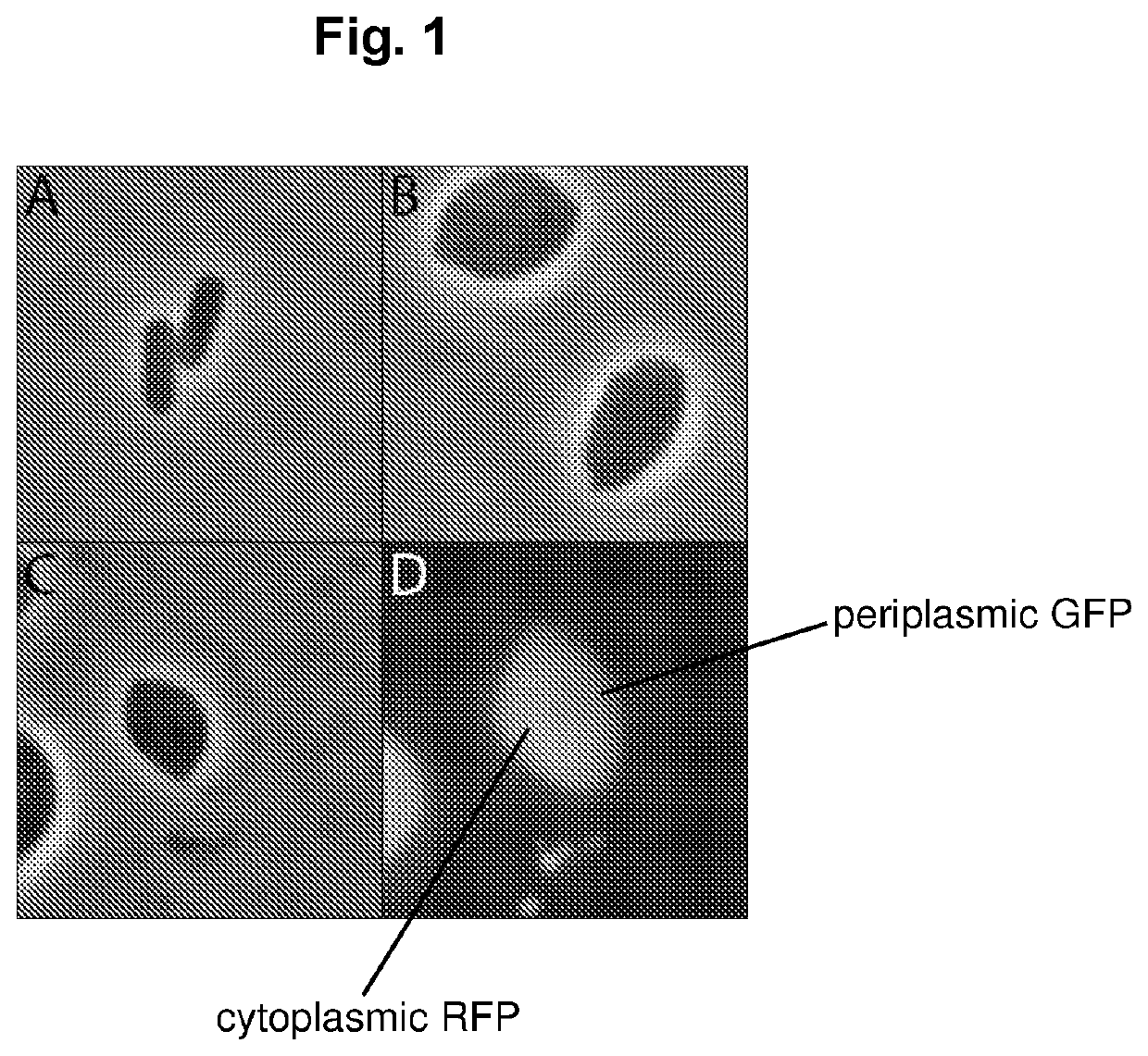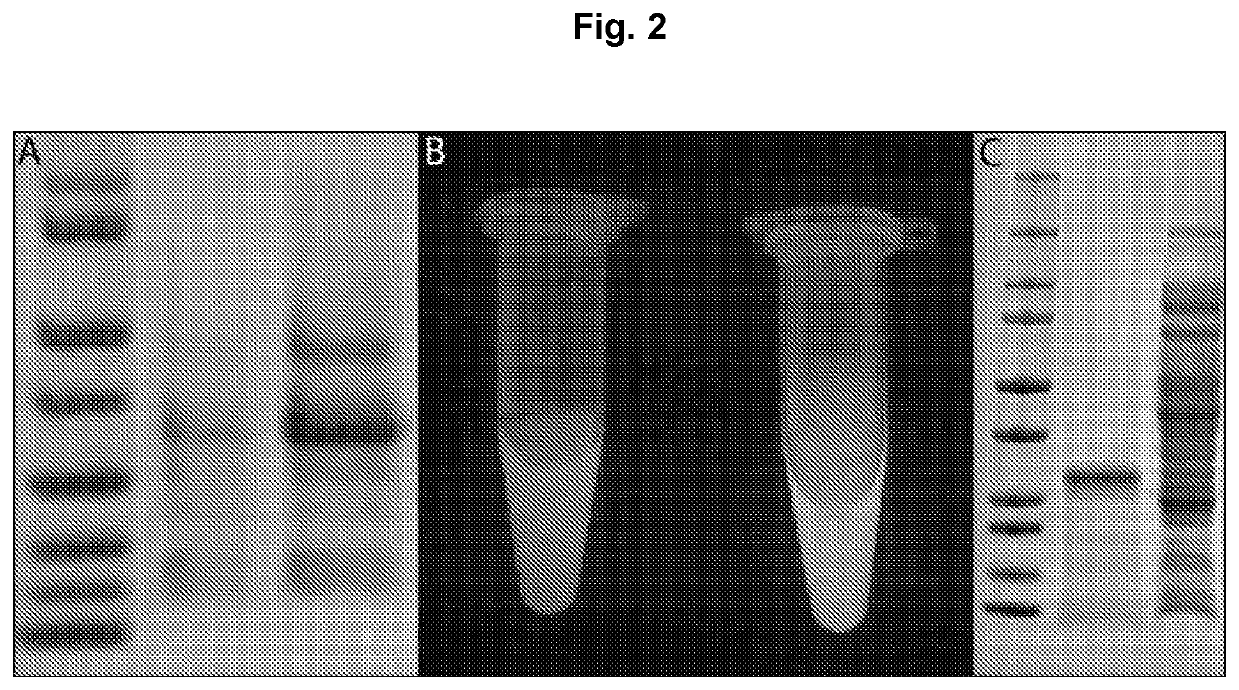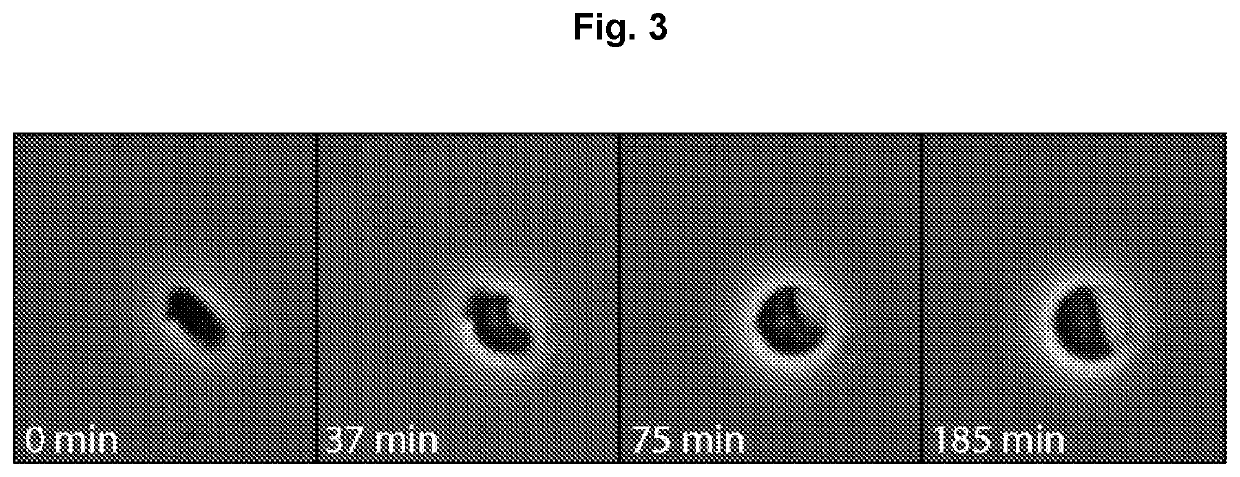Expression of proteins in gram-negative bacteria wherein the ratio of periplasmic volume to cytoplasmic volume is between 0.5:1 and 10:1
a technology of gram-negative bacteria and cytoplasm, which is applied in the field of expression, can solve the problems of insufficient inability to express proteins, and inability to obtain sufficient yield of functionally active gene products, and achieves the effects of promoting periplasmic space growth, enhancing periplasmic production of recombinant proteins, and inhibiting cell division
- Summary
- Abstract
- Description
- Claims
- Application Information
AI Technical Summary
Benefits of technology
Problems solved by technology
Method used
Image
Examples
example 1
Construction of the Modified Bacteria
Materials and Methods:
Strains:
Tested Physiological Switch and Protein Production:
[0119]E. coli BL21(DE3)—From NEB, product #c2527[0120]E. coli K12 NCM3722—From The Coli Genetic Stock Center, CGSC #12355
Tested Physiological Switch:
Gammaproteobacteria:[0121]Vibrio natriegens—From ATCC, product #14048[0122]Pseudomonas fluorescens—From ATCC, product #31948[0123]Pseudomonas aeruginosa PAO1—From ATCC, product #BAA-47
Alphaproteobacteria:[0124]Caulobacter crescentus—From ATCC, product #19089[0125]Agrobacterium tumefaciens / Rhizobium radiobacter—From ATCC, product #33970[0126]Brevundimonas diminuta—From ATCC, product #13184
Media Compositions:
1 Liter 5× m63 Salts:[0127]10 g (NH4)2SO4—From P212121, product #7783-20-2[0128]68 g KH2PO4—From P212121, product #7778-77-0[0129]2.5 mg FeSO4.7H2O—From Sigma Aldrich, product #F7002[0130]Bring volume up to 1 liter with milliQ water[0131]Adjust to pH 7 with KOH (From P212121, product #1310-58-3)[0132]Autoclave mixture
1...
PUM
| Property | Measurement | Unit |
|---|---|---|
| volume | aaaaa | aaaaa |
| volume | aaaaa | aaaaa |
| volume | aaaaa | aaaaa |
Abstract
Description
Claims
Application Information
 Login to View More
Login to View More - R&D
- Intellectual Property
- Life Sciences
- Materials
- Tech Scout
- Unparalleled Data Quality
- Higher Quality Content
- 60% Fewer Hallucinations
Browse by: Latest US Patents, China's latest patents, Technical Efficacy Thesaurus, Application Domain, Technology Topic, Popular Technical Reports.
© 2025 PatSnap. All rights reserved.Legal|Privacy policy|Modern Slavery Act Transparency Statement|Sitemap|About US| Contact US: help@patsnap.com



